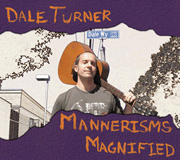
|
 |
|
|
|
|
|
Back in Psycho Licks Lesson #8, we developed a purely physical (geared towards developing picking/fretting hand synchronization), quasi chromatic exercise into a more conventional chromatic scale figure. In this Psycho Licks installment, this same “four finger” approach from the aforementioned lesson will be used to “chromaticize” garden-variety, three-notes-per-string scale shapes. You'll likely find this approach to be a highly useful, though “guitaristic,” approach towards interjecting chromaticism into shredding rock lines (à la Steve Morse, John Petrucci, Joe Satriani, etc.). (In the following text/transcription, the chromatic pitches referenced will be indicated in red.) ***************************************** Within three-notes-per-string scale shapes, chromaticism may easily interjected any time you're faced with a group of notes spanning the interval of a minor 3rd (the interval distance of four half steps) or a major 3rd (the interval distance of five half steps) along the same string (ascending or descending). To illustrate, using the first scale shape encountered below (beginning on the note “F”), the minor 3rds occur between the notes B-D (5th string), E-G (4th string), A-C (3rd string), and D-F (2nd string). Meanwhile, the major 3rds occur between F-A (6th string) and G-B (1st string). The individual strings that feature scalar fragments spanning a minor 3rd can be “chromaticized” simply by using all four fret-hand fingers to “fill in the blanks” between “legal” scale notes. Again, using the opening three-notes-per-string scale shape as an example, this would yield B-C-C#/Db-D (5th string), E-F-F#-G (4th string), A-A#-B-C (3rd string), and D-D#/Eb-E-F (2nd string). Meanwhile, the approach towards “chromaticizing” individual strings that feature scalar fragments spanning a major 3rd is a bit more difficult to execute if you don't know the fret board thoroughly. Again, using the opening three-notes-per-string scale shape as an example, this would yield F-G-G#/Ab-A (6th string) and G-A-A#/Bb-B (1st string). Notice that, in each handful of notes squeezed within the aforementioned major 3rd interval, the chromaticism only occurs between the last two diatonic notes. This is the result of using your ring finger to squeeze a chromatic note in between your fret-hand's middle and pinky fingers. In the example below, the preceding chromatic approach is used to spruce up all seven three-note-per-string scale shapes that occur in the key of C (C-D-E-F-G-A-B), or related modes (D Dorian, E Phrygian, F Lydian, G Mixolydian, A Aeolian, and B Locrian). Finally, a bit of advice: Don't strive to memorize these three-notes-per-string “shapes,” as depicted in the frames above the following transcription. Rather, make an effort to learn the actual pitches—by name—as they exist on the fretboard. With a little fretboard awareness, your fingers will grab notes on specific frets, not because you're plugging your fingers into a “shape,” but because you know the notes are right—you can see all the “A,” B,“ and “C” notes, for instance, and grab them intantaneously. (*You can hear the lick FAST by clicking HERE*) (*You can hear the lick SLOW by clicking HERE*)
To
help support this site's free online guitar lessons, please check
out my brand-new “full band” album of original compositions,
MANNERISMS
MAGNIFIED (now available through
CDBABY.com,
iTunes
and AMAZON.COM),
featuring me performing all the instruments (voices, guitar, bass,
real acoustic drums, piano, accordion, and mandolin). I also produced,
arranged, engineered, and did all the artwork/illustrations—intimate
audio AND visual, lol! (Details can be seen in my YouTube:
ALBUM PREVIEW/documentary.)
I’d love to hear your thoughts! Thank you :)
|
|
||
|
***
Click HERE for more of Dale Turner's PsYcHo
LiCkS! ***
|
|||
|
|
|||